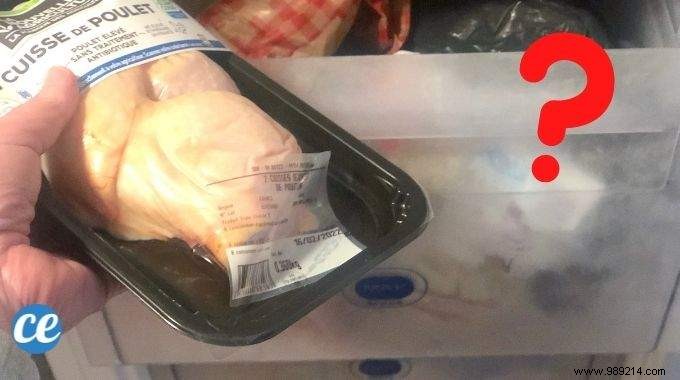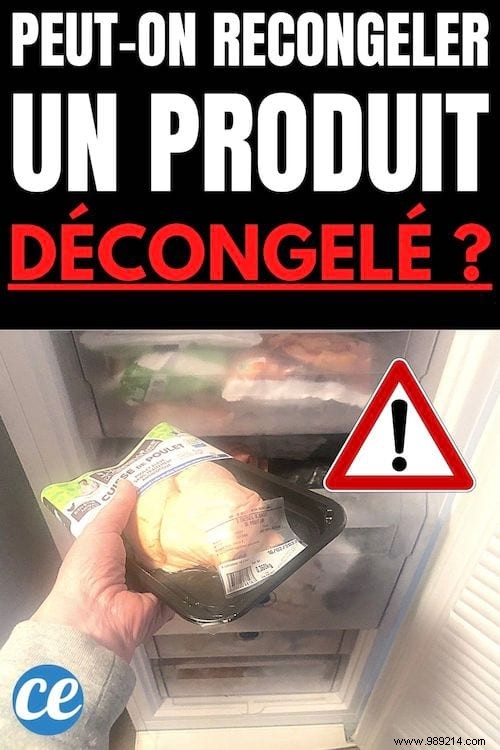
Do you know that you should NEVER refreeze a product who was thawed?
I admit that I was tempted to do this to avoid throwing away leftover food.
But please note this:refreezing food is strongly discouraged!
And my doctor again confirmed the risks.
Why ? Because it is dangerous for your health.
This is indeed the best way to get food poisoning.
But there is a scenario where you can still refreeze food. Explanations:

When you freeze a product, you kill a certain number of bacteria thanks to the extreme cold.
But not all of them!
Some bacteria resist and just go dormant.
When you thaw them, they wake up and begin to proliferate.
It must be said that defrosting makes their work easier...
Especially if it is done at room temperature or during rapid cooking at low temperature.
That being said, this is also true when defrosting a product in the fridge.
You can quickly end up with a thousand times more bacteria only at the start.
But I haven't told you everything yet...
Because the bacteria continue to multiply even during the refreezing process .
As a result, your dish has become a breeding ground for bacteria.
You now understand why you shouldn't refreeze anything!
This is a question you are probably asking yourself.
Well, the answer will surprise you!
Yes, in theory, you can refreeze a thawed and then cooked food .
This is the case with meat, for example. You are defrosting a piece of meat.
You cook it... And if you have any left over, you can refreeze it.
But be careful, there is an important rule to follow!
It mustbe perfectly cooked at a high temperature .
No rare meat for example.
I insist on this point:
It must be cooked to perfection in the oven, in the pan, simmered, but in any case, not in the microwave.
And be aware that even so, some bacteria are resistant to heat.
Moreover, this is only possible if your food has been thawed in the right way, namely in the refrigerator.
This is the recommended method for thawing any product.
Why ? Because bacteria grow less quickly this way.
And what's more, icing on the cake, you save electricity with your fridge.
Then, once cooked, keep your dish in the freezer at -18°C.
Put it in a box designed for freezing. And hop, in the freezer!
You can keep it like this for 2 months.
On the other hand, it is strictly inadvisable to thaw your cooked meat and then freeze it again.
To avoid mess, freeze it small amount by small amount.
That way you only defrost what you need.
If you have suffered a freezer or power outage, you can cook your meals still frozen .
This avoids throwing everything away.
But if it is dishes containing meat, fish, ice cream, seafood...
...in other words, sensitive and perishable products completely thawed and whose temperature has exceeded 4°C, they must unfortunately be thrown away .
The precautionary principle dictates that a thawed product should not be re-frozen.
Unless you cook the food well.
It's clear, it can be wasteful. But your health is more important.
And don't forget that some people are more susceptible to the risk of food poisoning.
This is the case of pregnant women, babies, the elderly, people with weak immunity.
If you have leftovers, it is better to cook them with easy recipes.
This way, you avoid food waste and preserve your health and that of your family.